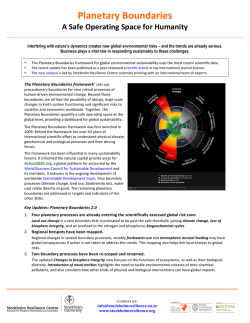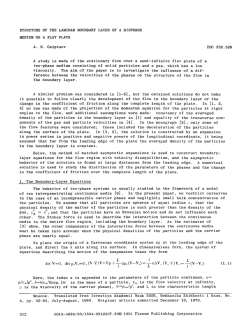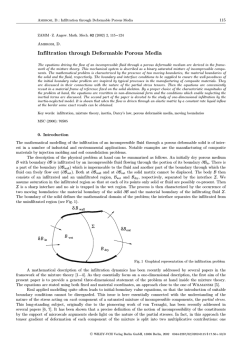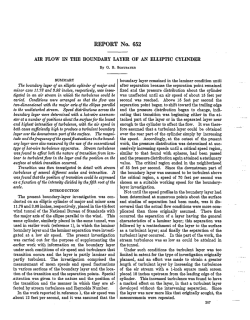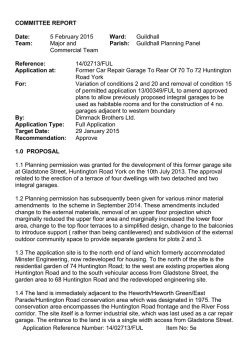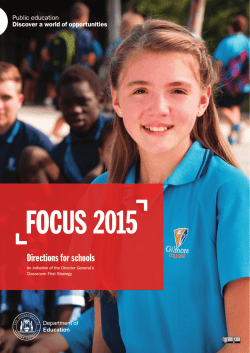
Using Multiple Devices to Manage Work-Life Balance
Balancing Boundaries: Using Multiple Devices to Manage Work-Life Balance Rowanne Fleck1,2, Anna L. Cox1, Rosalyn A. V. Robison3 1 UCL Interaction Centre University College London Gower Street, London WC1E 6BT, UK r.fleck, [email protected] 2 The HCI Centre University of Birmingham Birmingham B15 2TT, UK [email protected] ABSTRACT Information and communication technologies (ICTs) continue to give us increased flexibility about when and where we choose to work and the freedom to deal with home tasks whilst at work. However more use of ICT for work during non-work time has been linked with negative outcomes including lower work and life satisfaction and increased stress. Previous work has suggested that in order to reduce some of these negative effects, people should adopt technology use strategies that aid separation of their home and work lives. In this paper we report the results of a questionnaire study investigating work-life balance boundary behaviours and technology use. We find that people use multiple devices as a way of creating boundaries between home and work, and the extent to which they do this relates to their boundary behaviour style. These findings have particular relevance given the increasing trend for Bring Your Own Device (BYOD) policies. Author Keywords Life-work balance; boundary control; technology boundary work; device separation; Bring Your Own Device. ACM Classification Keywords H.5.m. Information interfaces and presentation (e.g., HCI): Miscellaneous. INTRODUCTION Previous research has found many positive and negative aspects of the effects of communication technologies on our work-life balance. Flexibility is one of the main benefits these technologies offer: they allow people to fit their work around other responsibilities [13] and reduce the cost for people in transitioning between work and non-work roles Permission to make digital or hard copies of all or part of this work for personal or classroom use is granted without fee provided that copies are not made or distributed for profit or commercial advantage and that copies bear this notice and the full citation on the first page. Copyrights for components of this work owned by others than ACM must be honored. Abstracting with credit is permitted. To copy otherwise, or republish, to post on servers or to redistribute to lists, requires prior specific permission and/or a fee. Request permissions from [email protected]. CHI 2015, April 18 - 23, 2015, Seoul, Republic of Korea Copyright is held by the owner/author(s). Publication rights licensed to ACM. ACM 978-1-4503-3145-6/15/04…$15.00 http://dx.doi.org/10.1145/2702123.2702386 3 Global Sustainability Institute Anglia Ruskin University Cambridge CB1 1PT, UK [email protected] which can be very positive for people with multiple roles [6]. Being able to deal with home matters whilst at work is associated with job satisfaction [10] and people who make use of communications technologies outside normal work hours can feel more in control of and more productive in their work [3]. However, use of information technology has also been reported to cause blurring of the boundaries between work and non-work [10] and to allow work to intrude more into our private lives [4]. This can lead to negative spillover from one role to another, the perception of more job stress and a heavier workload [10, 11]. In order to reduce the negative impacts of ICT, previous research suggests that people should try to limit their use of work technologies at home, or adopt techniques for separating their home and work lives more [11] However, boundary theory posits that different people have different preferences for the extent to which they are willing to allow their work to intrude on their non-work time [1] and this might affect their use of technology [11]. To date there is limited research that considers the way people use technology to manage their boundaries; in particular, we are unaware of any work that considers the extent to which people make use of multiple devices as a means of managing their home/work boundaries or how this relates to their boundary preferences. Exploring whether they do this or not is timely given the increasing trend for Bring Your Own Device (BYOD) policies at work and school. These encourage employees or pupils to bring their own devices into work/school to use for work purposes, and could potentially cause problems for people in maintaining their preferred work/life balance [5]. Therefore, the aim of this research was to understand more about how people use one or more devices to integrate or separate their work and non-work activities, and how this relates to their overall boundary behaviour style. To address these questions we conducted a national survey of people in paid full or part-time work in the UK. Participants were asked about their technology device ownership and use for work/non-work purposes, and questions to determine their current boundary behaviour style. This research makes 3 contributions: first, drawing on literature from diverse sources, we define a specific situation that would benefit from HCI research that is not currently considered, that of the impact of multiple device usage on work-life boundary management; second we verify and expand on previous work around boundary behaviour styles; and third we are the first to present evidence that people use their devices to create and maintain boundaries between work and nonwork in line with their preferred boundary behaviour style. RELATED RESEARCH According to Boundary theory, different people have different preferences for how much they like to separate or integrate their work with other aspects of their life [1]. It has been suggested that violations of these preferences can lead to stress [9]. However, the way that individuals actually manage their boundaries is determined by a number of factors beyond people’s preferences, including the type of job a person is employed in, work-place attitudes and flexible working policies, their work role identification, their family situation and family role identification and their feeling of control over their job and their boundaries [8]. Based on interview studies of workers in North America, Kossek and Lautsch [7] identified three main boundary behaviour styles (flexstyles) that their participants adopted: ‘Integrators’ (who integrate work and non-work), ‘segmenters’ (who separate them, usually putting work or non-work first) and ‘volleyers’ (who are people who switch between an integration or segmentation behaviours depending on current demands). Within these three flexstyles they identified some people who were happy with, or in control of their boundary behaviours, and some people who did not feel in control of them. The resulting six categories are shown in Table 1 later. In subsequent research they developed a Work Life Indicator scale to organize people into these categories and found that higher perception of boundary control is related to better work-family outcomes for people across different boundary behaviour styles [8]. Also, in a study of mobile communications device adoption, Duxbury et al. [4] found that around half of their participants struggled to maintain their preferred boundary behaviours after adoption of a Blackberry device. Therefore not only is having good control of boundaries to fit your preferred boundary behaviour style important, the introduction of new ICTs can affect this. Boundary work is the term given to describe the tactics people use in order to try to maintain their preferred boundary behaviours [9]. Kreiner et al. [9] identified four main ways in which people do this: behavioural, temporal, physical and communicative. Research has also suggested that people do boundary work using technology: e.g. For example, features of the technology can help people in managing boundaries: caller ID, different ringtones and voicemail can enable you to choose not to answer calls at an inappropriate time [2, 9]. Whilst the research above begins to explore the kind of technology boundary work people do, there is little research that considers the extent to which these tactics are used in practice, by whom, or how effective they are at enabling people to manage their work-life balance in a way that suits them. Park & Jex [11] suggested that creating rules around the use of ICTs at home for work related matters was linked to greater psychological separation from work, and that people with a separation preference were more likely to do this. However, Duxbury et al. [4] suggested that creating and maintaining such rules took a great deal of self-control and some people struggle to achieve this. Given the increase in number of devices people now use and their increasing functionality, people have more choice over whether to use all their devices to integrate home and work, or keep separate devices for each. Therefore the aim of this paper is to explore if and how people use multiple devices as a technology boundary work tactic. We hypothesise that people will use multiple devices in a way that matches their current boundary behaviour style. METHOD Participants 285 participants (157 male, 127 female, 1 preferred not to say) ranging in age from 18-69 took part in this research. Of these 201 reported they were in full-time paid employment, 47 part-time, 37 full or part-time self-employed, 4 part-time students and 5 other (multiple categories permitted). Participants were recruited via a web panel and selected to be a nationally representative sample of the UK working population, in terms of age, gender, and region. They were paid a small sum for their participation. Measures Participants were asked to list up to 10 digital technology devices they used on a regular basis, including those located at their workplace, and whether they used each device: entirely for work, mainly for work, partly for work and partly for non-work, mainly for non-work or entirely for non-work. To categorise people’s boundary behaviour style, we used the Work Life Indicator developed by Kossek [8]: A 17 item, 5 factor scale which captures people’s non-work interrupting work behaviours (e.g. I take care of personal or family needs during work), work interrupting non-work behaviours (e.g. “I regularly bring work home”), boundary control (e.g. “I control whether I have clear boundaries between my work and personal life”), work identity (e.g. “people see me as highly focused on my work”) and family identity (e.g. I invest a large part of myself in my family life), measured using a 5 point Likert scale. Analysis 1"x" 3"x"" 3"x" 2"x" 2"x" devices" devices" devices" used"for" devices" devices" used" +" used" +" both" +" used" +" used"only" Device" only"for" mainly" home"and" mainly"for" for"nonA Separa=on" =" work" for"work" work" nonA"work" work" Score" " Total"number"of"devices"used" We calculated a Device Separation score between 1 (integration) and 3 (separation) for each person as above, based on how they reported they used their devices. Values for the scores on the Work Life Indicator were calculated according to the instructions provided by the authors of the scale. RESULTS Use of Devices Figure 1: Number of devices people use 26 participants reported that they did not use any digital technology devices (such as mobile phones or computers) on a regular basis either at home or work (see Figure 1), and so were excluded from further analysis. The modal number of devices used by participants was 3. Mean%Score%for%cluster%on%WLI%scales% Boundary Behaviour Styles 5" 4.5" 4" 3.5" 3" 2.5" 2" 1.5" 1" 0.5" 0" Non3work" Interrups"Work" Work"Interrupts" Non3work" Boundary" Control" Work"IdenBty" FF" D" C" JW" FL" M" Cluster%(abbreviated%name%9%see%text)% Family"IdenBty" Figure 2: Mean scores of each cluster on WLI measures Following Kossek et al. [8] we conducted a cluster analysis to discover participant’s flexstyle [7]. We used SPSS’s KMeans clustering with a Euclidean distance similarity index, and looked for a 6 cluster solution as suggested by this previous research. Figure 2 illustrates the mean scores for the final 6 clusters, which are described in more detail below. Table 1 illustrates how the six clusters that emerged fit with Kossek and Lautsch’s qualitative flexstyle descriptions [7]. Fusion Lovers (FL) showed the highest total interruptions (i.e. non-work interrupts work + work interrupts non-work scores) of all groups and these were equal in both directions (i.e. they allowed a similar number of interruptions from work into non-work time and vice-versa). They also reported high boundary control, so can be considered high control integrators. Moderates (M) allow moderate interruptions in both directions and their perceived boundary control is just below average, so we consider them low control integrators. However their level of control is not as low as the reactor flexstyle would suggest, or the reactor cluster found by Kossek et al. [8] so we chose a new name for them. One cluster, Job Warriors (JW), represented a small number of participants who showed moderate overall interruptions, but in contrast to all other clusters, more of these were work into non-work. They also reported a much higher work than family identity and low control. Three clusters showed segmenter boundary behaviours: Family Firsters (FF) had low total interruptions, higher family identities than work identity and allow very little work to interrupt non-work time, though they do allow some interruptions from non-work into work time. They report the highest level of boundary control, suggesting these people are Family First separators. Kossek et al. [8] also found a group matching this description in their own cluster analysis. Dividers (D) interruptions were symmetrically low in both directions, had both high work and family identities and report feeling quite in control of this separation. Therefore, unlike the suggestion that segmenters tend either to put family or work first, this group of people seem to have equal loyalties to both home and work, but choose to keep them separate. We have named them after Kossek et al.’s [8] ‘divider’ group, found in their cluster analysis. Finally Captives (C) also report low interruptions in both directions, but with low control. In control Low control Integrators Volleyers Segmenters Fusion lovers Quality timers Firsters (work or family) fusion lovers family firsters dividers Reactors Job Warriors Captives moderates job warriors Captives Table 1: Comparison of Kossek’s Flexstyles (standard text) [7] with our resulting clusters (in italics). Clusters and Device Use Segmentor) Styles) 2.9$ Volleyer) Style) 2.7$ 2.5$ Integra0on) Styles) 2.3$ 2.1$ 1.9$ 1.7$ 1.5$ FF" D" C" JW" FL" M" Figure 3: Device Separation Score across clusters. To explore whether people’s boundary behaviours are related to their technology boundary tactics, we looked at the total number of devices participants’ used and device separation scores across clusters. The total number of devices owned did not differ significantly between clusters, however a one-way between groups analysis of variance suggested the device separation scores did: F(5, 254)= 8.0, p<0.01. As illustrated by Figure 3, those with segmentation behaviours had higher device separation scores than those with integrator behaviours. Post-hoc tests using Tukey HSD suggest this difference was significant for Fusion Lovers (M=2.05, SD=0.69) who had a lower score than Family Firsters (M=2.60, SD=0.52) Dividers (M=2.61, SD=0.48) and Captives (M=2.68, SD=0.51). that warrants further HCI research, especially given the growing trend for BYOD policies at work and school. We have verified and extended previous work on boundary behaviour styles, and have found evidence that people use their devices to create and maintain boundaries between work and non-work in line with their preferred boundary behaviour style. ACKNOWLEDGMENTS DISCUSSION To discover our participants’ boundary behaviour styles we clustered them based on their scores on the WLI developed by Kossek et al. [8] as this approach allows us to consider how a combination of variables important to work-life balance relate to technology use. We compared our resulting clusters to their qualitative flexstyle descriptions [7] and to their own cluster analysis based on the WLI [8]. We found some overlap in our clusters with theirs, but some differences, which we suggest are due to the different samples used: they used a sample of North American teleworkers, whereas we considered a representative sample of the whole UK working population. We found that using separate devices for home and work is something that our participants do, and that the extent to which they do it is related to their boundary behaviour styles. Therefore, whilst mobile ICTs become more multi-functional and offer easier integration of work and home in one device, our findings suggest not everyone chooses to do this: we found people with segmentation boundary behaviour styles were more likely to have separate devices for home and work, even though overall they used the same number of devices as those with integration behaviour styles. This could suggest that using separate devices creates more separation between home and work and decreases interruptions, and that it is an effective boundary management tactic. Alternatively, it could just be that people who prefer to segment their work and non-work lives are more likely to use device separation as a tactic. However, we measured boundary behaviours rather than preferences: some of our participants reported low levels of perceived control over their boundaries (in particular job warriors and captives) which has been linked to lower work-life outcomes [8]. Therefore, if they are unhappy with their current boundary behaviour style, being aware of this and adopting a different device separation tactic could help change their behaviour. For example, Job Warriors could benefit from using separate devices for home and work, or, if they are able, captives could try using their devices across home and work more. These findings also have implications for BYOD policies: whilst they may decrease cost and save people carrying multiple devices around, some people may want to buy a separate device for work/school in order to stay in control of their boundaries. CONCLUSIONS In this research we have highlighted the impact of multiple device usage on work-life boundary management as a topic This research was funded by the EPSRC Digital Epiphanies project EP/K025392/1. Many thanks to Jon Bird, and UCLIC and CHI reviewers for comments on the drafts. REFERENCES 1. Ashforth, B.E., Kreiner, G.E., and Fugate, M. All in a day's work: Boundaries and micro role transitions. Academy of Management review 25, 3 (2000), 472491. 2. Battard, N., and Mangematin, V. Idiosyncratic distances: Impact of mobile technology practices on role segmentation and integration. Technological Forecasting and Social Change 80, 2 (2013), 231-242. 3. Diaz, I., Chiaburu, D.S., Zimmerman, R.D., and Boswell, W.R. Communication technology: Pros and cons of constant connection to work. Journal of Vocational Behavior 80, 2 (2012), 500-508. 4. Duxbury, L., Higgins, C., Smart, R., and Stevenson, M. Mobile technology and boundary permeability. British Journal of Management 25, 3 (2014), 570-588. 5. Grevet, C. Managing the work-home boundary in a BYOD culture. Workshop on Socio-Technical Systems and Work-Home Boundaries. Mobile HCI'14 (2014). 6. Kirchmeyer, C. Managing the work-nonwork boundary: An assessment of organizational responses. Human Relations 48, 5 (1995), 515-536. 7. Kossek, E.E., and Lautsch, B.A. CEO of me: Creating a life that works in the flexible job age. Pearson Prentice Hall, (2007). 8. Kossek, E.E., Ruderman, M.N., Braddy, P.W., and Hannum, K.M. Work–nonwork boundary management profiles: A person-centered approach. Journal of Vocational Behavior 81, 1 (2012), 112-128. 9. Kreiner, G.E., Hollensbe, E.C., and Sheep, M.L. Balancing borders and bridges: Negotiating the workhome interface via boundary work tactics. Academy of Management Journal 52, 4 (2009), 704-730. 10. Nam, T. Technology Use and Work-Life Balance. Applied Research in Quality of Life (2013), 1-24. 11. Park, Y., and Jex, S.M. Work-home boundary management using communication and information technology. International Journal of Stress Management 18, 2 (2011), 133.
© Copyright 2026

